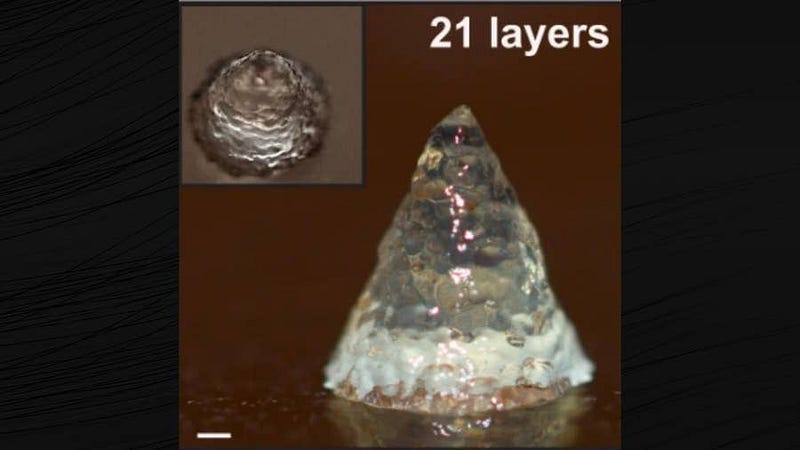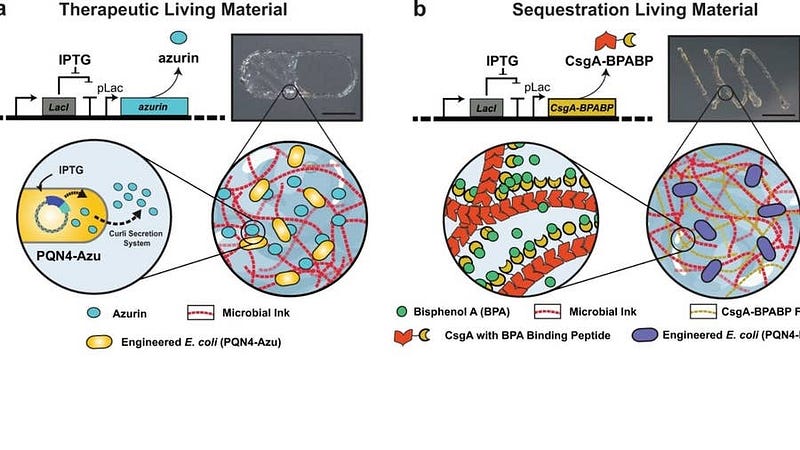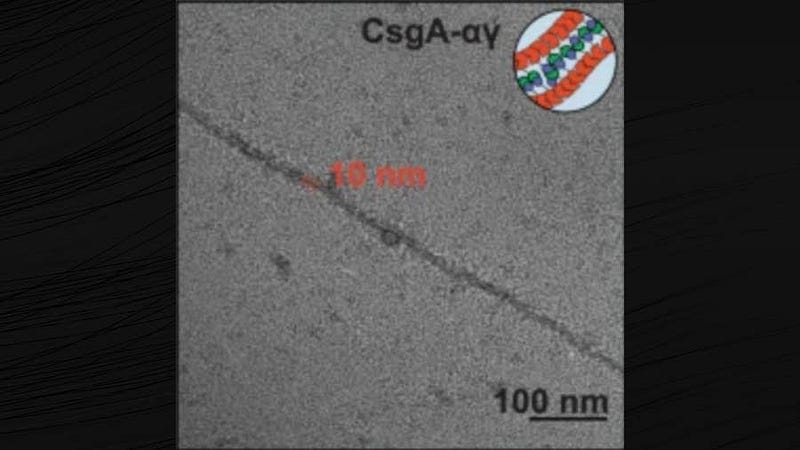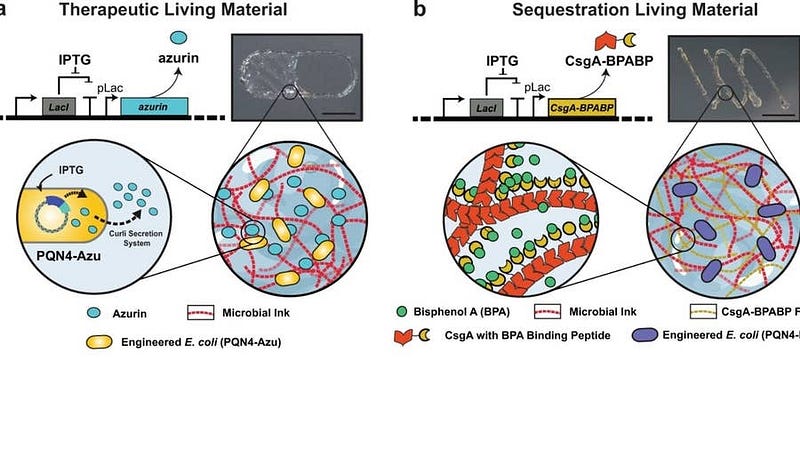Microbial 3D-printed “Living Ink” Fights Cancer
3D-printed E.coli-based bioink can release anti-cancer drugs and absorb dangerous toxins.

Who doesn’t get a bit giddy every time there’s a new advancement in 3D printing technology? After all, there are so many incredible things to be done with 3D printing! What once seemed like total sci-fi is now a regular reality.
Researchers from the Massachusetts Institute of Technology in Boston were able to use a special form of 3D printing to create a “living ink.” This ink can release cancer cures, absorb toxins from the body, and regulate its growth as needed by the host.
“We set out to develop a bioink… “microbial ink” that is produced entirely from genetically engineered microbial cells…”
The team wanted to create “an extrudable bioink that had high print fidelity, produce the bioink entirely from engineered microbes, and create a programmable platform that would push the emerging field of living materials to unexplored frontiers.”
They succeeded. Now, for the very first time, a living ink that is capable of responding to its environment has been created, and the future of medical technology just took a massive step into the future.
3D-printing microbial ink

“Many bioink designs have already been explored, none so far have fully leveraged the genetic programmability of microbes to rationally control the mechanical properties of the bioink.”
Attempts to print living microbial structures have been attempted with inkjet printing, contact printing, screen printing, and lithographic techniques, but so far, it’s extrusion (or, “3D-printing”), that has allowed the field to advance.
Various forms of printed microbial structures have been experimented with before now, but all of these required some sort of additional polymer.
Instead, this team developed a type of bioink that is completely derived from proteins produced by E.coli cells. It is by then injecting other, genetically modified E.coli cells, that living structures are formed to allow for drug release and toxin absorption.
The genetically modified E.coli produces this ink by fusing positively and negatively charged protein modules, which attach to one another and lock to create crosslinked fibers. After this, the team filtered the resulting product to further concentrate the bacteria, and thus create a compound of the suitable viscosity and elasticity needed for printing.
The result? A gel that can be piped to produce threads half a millimeter wide: that’s half the size of a pencil tip! This thread is strong enough to hold up even when stretched 16 milliliters apart, a giant distance for something so thin.
This proved that their new technique for making bioink worked, and that they could get away with creating a bioink from nothing more than the protein connections produced by the E.coli bacteria.
Microbial ink to living bioink

Once the researchers knew that their new microbial ink worked, they introduced genetically engineered microbes to the mixture. This produced 3D-printed living functional architectures: living material capable of carrying out a massive range of therapeutic applications.
By seeding this new bioink with a cancer-fighting drug called azurin, the researchers discovered that they could ensure the bioink released azurin whenever it detected a chemical called IPTG.
These tests showed that the bioink could respond to its environment, actively producing the anticancer drug only when it needed to. This meant that the bioink could be further engineered to effectively control and/or induce cell growth and death, depending on the need of a patient.
Their next step was to see if their new biofilm could be taught to absorb something harmful. For this, the team chose the harmful chemical BPA (bisphenol A), an industrial chemical that has been used to make certain plastics and resins since the 1950s despite being shown to cause harmful effects.
The researchers added new modified cells that, via the same interlinking feature they used to connect to one another, could connect and trap particles of BPA: almost a full 30 percent of the toxin in the text liquid within just 24 hours.
The future of medical science: 3D-printed living therapy!

The science is complex, but the outcome is simple and beautiful. Future bioinks will be able to respond to the environment they are inside: such as a human body. There, they can automatically release lifesaving drugs directly to the source of serious conditions.
These new bioinks will also be able to tackle toxins in a patient’s body by binding to those toxins (using part of the same bonding mechanism that holds the bioink together). They will then be able to thereby capture those toxins and remove them from the body.
Best of all, this new 3D-printing process is cost-effective, fast, and incredibly stable when compared to previous methods that have been used. It pushes the boundaries of what such technology can do. And, while you probably won’t be able to 3D-print your own anti-cancer therapy any time soon, there might be a day in the not-so-distant future when some of our worst illnesses are combated from within by genetically engineered living beings.
